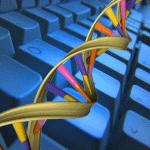Bioinformatics
|
5 february 2016 16:06:15 |
| Understanding the fabric of protein crystals: computational classification of biological interfaces and crystal contacts (Bioinformatics) |
|
Tweet Modern structural biology still draws the vast majority of information from crystallography, a technique where the objects being investigated are embedded in a crystal lattice. Given the complexity and variety of those objects, it becomes fundamental to computationally assess which of the interfaces in the lattice are biologically relevant and which are simply crystal contacts. Since the mid-1990s, several approaches have been applied to obtain high-accuracy classification of crystal contacts and biological protein–protein interfaces. This review provides an overview of the concepts and main approaches to protein interface classification: thermodynamic estimation of interface stability, evolutionary approaches based on conservation of interface residues, and co-occurrence of the interface across different crystal forms. Among the three categories, evolutionary approaches offer the strongest promise for improvement, thanks to the incessant growth in sequence knowledge. Importantly, protein interface classification algorithms can also be used on multimeric structures obtained using other high-resolution techniques or for protein assembly design or validation purposes. A key issue linked to protein interface classification is the identification of the biological assembly of a crystal structure and the analysis of its symmetry. Here, we highlight the most important concepts and problems to be overcome in assembly prediction. Over the next few years, tools and concepts of interface classification will probably become more frequently used and integrated in several areas of structural biology and structural bioinformatics. Among the main challenges for the future are better addressing of weak interfaces and the application of interface classification concepts to prediction problems like protein–protein docking.
Supplementary information: Supplementary data are available at Bioinformatics online.
Contact: guido.capitani@psi.ch |
| 140 viewsCategory: Bioinformatics |
 Unbiased Rare Event Sampling in Spatial Stochastic Systems Biology Models Using a Weighted Ensemble of Trajectories (PLoS Computational Biology) Unbiased Rare Event Sampling in Spatial Stochastic Systems Biology Models Using a Weighted Ensemble of Trajectories (PLoS Computational Biology)MicroRNAs Form Triplexes with Double Stranded DNA at Sequence-Specific Binding Sites; a Eukaryotic Mechanism via which microRNAs Could Directly Alter Gene Expression (PLoS Computational Biology) 
|
| blog comments powered by Disqus |
MyJournals.org
The latest issues of all your favorite science journals on one page
The latest issues of all your favorite science journals on one page



